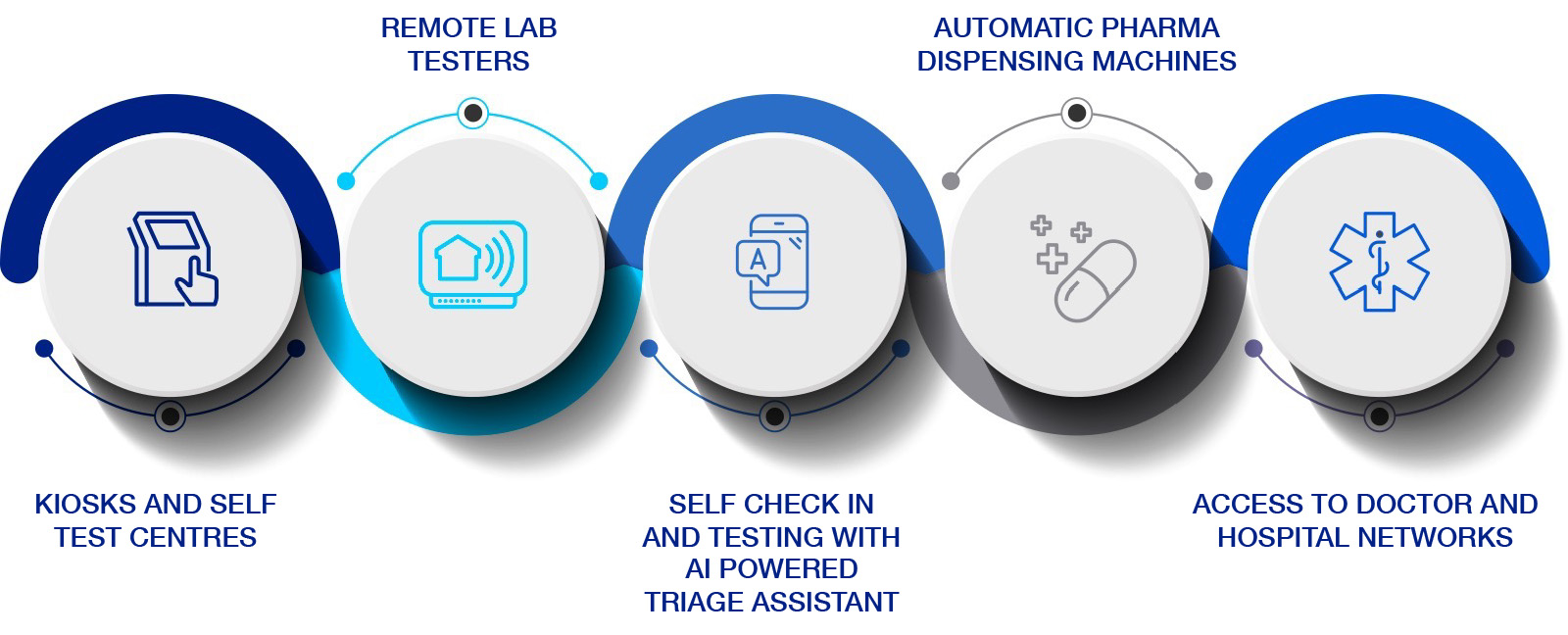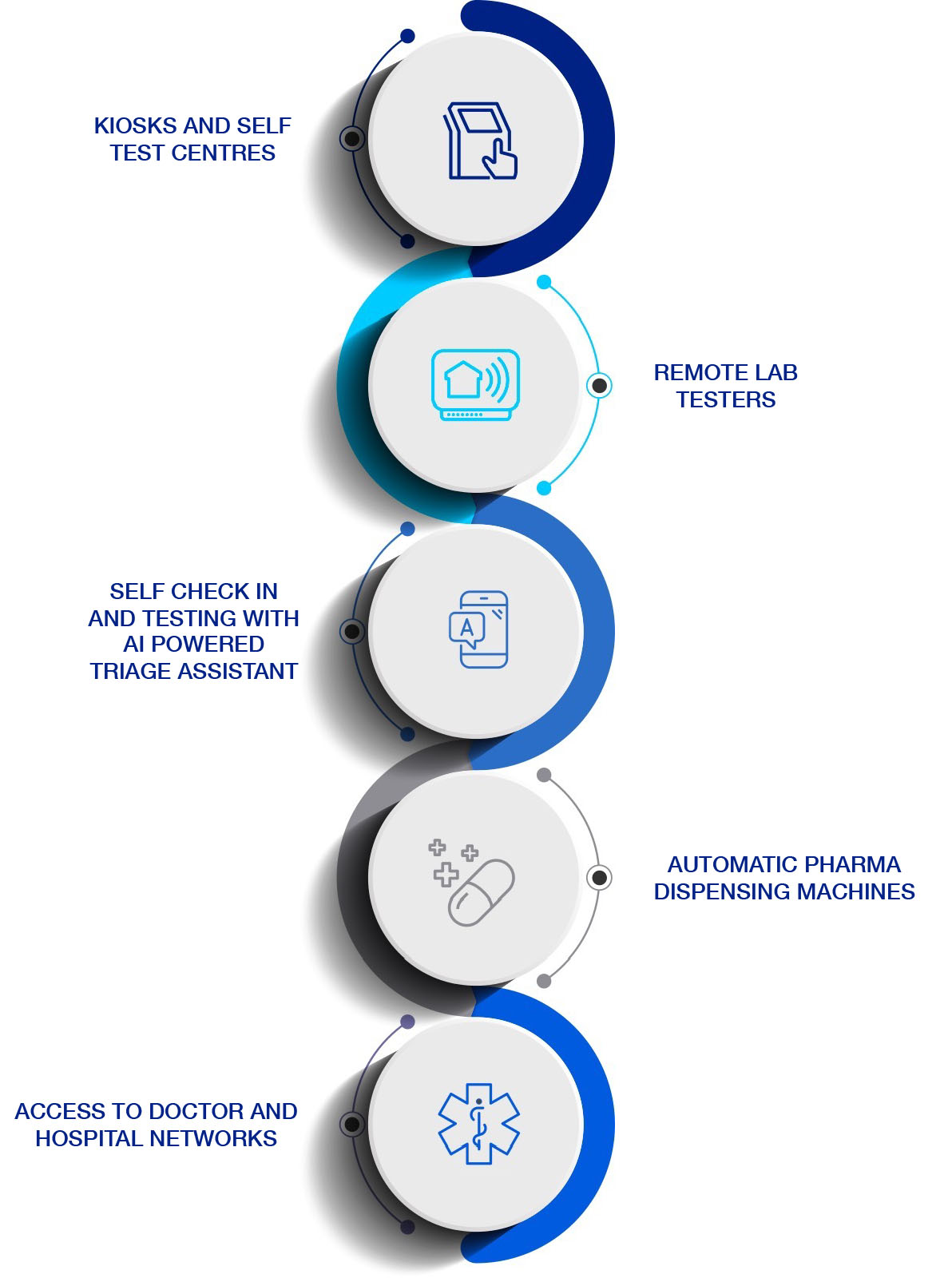OUR PLATFORM
We are developing a new paradigm in patient care
This market is ready for powerful disruption.
Our Solution.
UniDoc Virtual eHealth Clinics

UniDoc Virtual eHealth Clinics aim to:

Provide patients with the convenience and flexibility of having virtual healthcare visits in the comfort of their home or at a point of service close to it.

Allow physicians to expand their practice supported by leading-edge intelligent diagnostic technologies with full access to the patients’ clinical data, vital signs and automated triage assessments in real time.

Enable governments, institutions and organizations to set up a low-cost point of service for virtual visits without the financial barriers of in-house physicians’ recruitment and retention.
UniDoc aims to disrupt the broken elements of North America’s healthcare system.
UniDoc goes beyond traditional videocall telemedicine. With a revolutionary new way to interact and collaborate with doctors, UniDoc TriAge Assistant and Virtual Care Model remotely integrates the deductive power of AI powered software systems and a full suite of diagnostic hardware tools and options – the outcome is virtually the same as being in a doctor’s office.
Today's Healthcare Industry
As digital transformation continues permeating the healthcare industry, telehealth is gaining momentum as an increasingly popular alternative to traditional clinical care.
Telehealth, an integral part of home-based care, first found its niche with seniors: According to AARP, 87% of adults age 65 and older want to stay in their current home and community as they age. But now that Medicare telehealth regulations are loosening, its popularity will only increase.
The aging population isn’t the only group that stands to benefit from telehealth programs: Healthcare organizations that offer them are already earning early dividends, including cost avoidance, lowered readmission rates, and a greater number of patients served.
And as technological advancements enable a prevention and wellness-based model, and consumer preferences shift in favor of more personalized care, consumers are opening up to these virtual solutions. In fact, 57% said they’d use telehealth for a remote general consultation if given the option, according to the 2018 Business Insider Intelligence Insurance Technology Study.
Deloitte estimates that US health spending will balloon from 2020’s$4 trillion estimate to $8.3 trillion by 2040. A main driver of these high costs is healthcare companies’ adoption of emerging health-focused technology. We estimate that US healthcare providers and facilities spent $11.36 billion on cloud-based technologies in 2020—up 33.0% from 2019, when they spent $8.55 billion.
To offset costs, healthcare providers are leveraging the increase in consumers who want to play a more active role in monitoring their own health by encouraging tech that promotes vital tracking, early detection, and prevention of disease. Specifically, remote patient monitoring (RPM) tools, which enable a continuous stream of real-time health data between patients and their doctors, will account for much of this savings.
What is eHealth?
The integration of information and communications technologies (IT) in the health sector.
HOSPITAL CARE: electronic patient admin, laboratory and radiology information; electronic messaging; telemedicine such as teleconsults, telepathology, and teledermatology.
HOME CARE: teleconsults and remote vital signs monitoring systems
PRIMARY CARE: integrates general practitioners and pharmacists for patient management, medical records and electronic prescribing.
Our Solution
Combines Information Technologies with Specialized Diagnostic and Communication Hardware powered by AI for remote consultations designed for easy patient access.


A complete solution

UniDoc Virtual Health Clinics are being designed for intelligent accessible diagnostic capability.

Offering a safe, secure way to connect patients in urban, rural, and remote locations with high-quality medical care.

Built on trusted partnerships with renowned medical and advanced technology companies, to bring powerfully innovative proprietary technology to offer greater accessibility.

Designed to deliver AI supported, rapid, real-time diagnostic and therapeutic treatment solutions and continued health monitoring.
Better access to
healthcare is the future.

